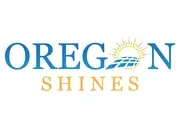A referral program is like making a phone call. There are two distinct categories of people involved, the ‘ADVOCATE’ and of course, the ‘REFEREE’.
ADVOCATE
The Advocate (also called "Referrer") is the one making the referral. They’ve usually purchased from you before and trust your brand, prompting them to want to share their experiences with their friends and family.
REFEREE
The Referee is the person being referred to your business. They’re a new customer who could also become a repeat customer if they can find value in your brand.
--------------------------------
Which event triggers a successful referral?
In order words, what does a referred person have to do in order to be considered a referral?
If your goal is to increase leads/signups, then the referral event will be simply a signup. However, if your goal is to grow sales, the referral event could be a purchase or a demo scheduled with a sales rep.
Should you reward both Referrers and Referees? - YES!
Rewarding both sides of a referral makes sure that both new and returning customers feel valued, regardless of their relationship with your brand.






















.png)